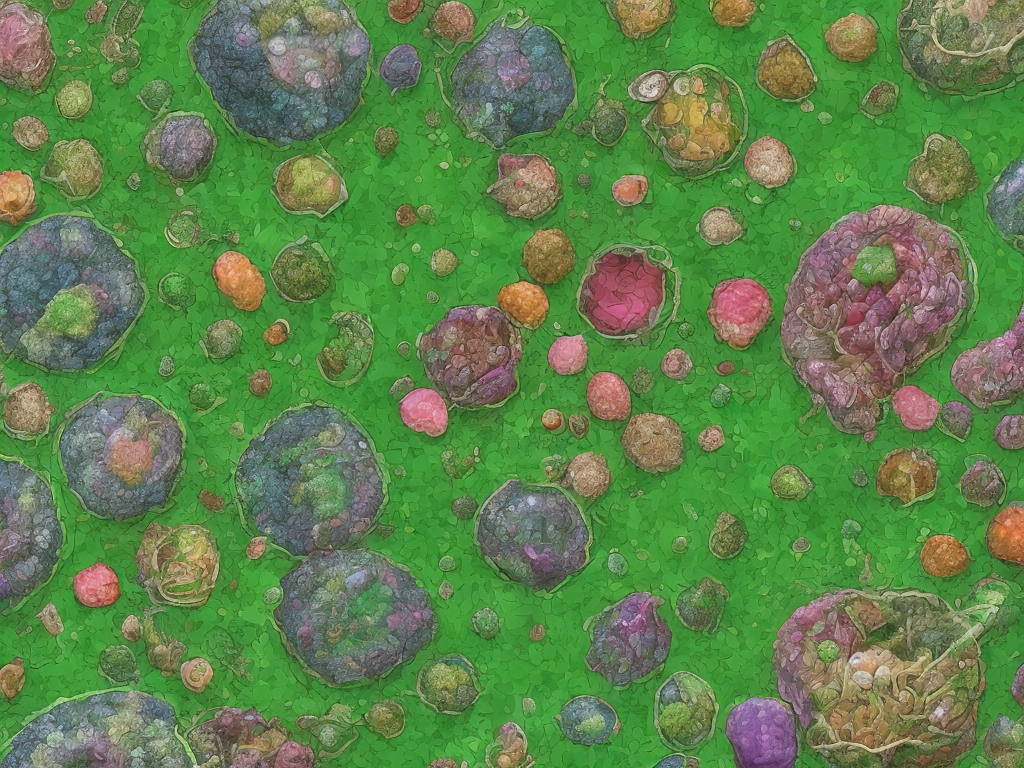
Cells are fundamental units of life. There are two major types of cells – plant cells and animal cells. Both are eukaryotic cells, meaning they have a nucleus and a plethora of organelles that perform various metabolic and regulatory functions. However, plant cells and animal cells differ in several characteristics, which will be explained in the following paragraphs.
1. Cell Wall and Cell Membrane
The most important difference between plant cells and animal cells is the presence of a cell wall in plant cells. A cell wall is a rigid structure that surrounds the plasma membrane in plant cells. It is made up of cellulose, hemicellulose, and lignin, which provide the cell with structural support and protection. In contrast, animal cells do not have a cell wall. Instead, they have a flexible cell membrane that encloses the cell and regulates the exchange of molecules between the cell and its environment.
2. Chloroplasts and Photosynthesis
Another important difference between plant cells and animal cells is the presence of chloroplasts in plant cells. Chloroplasts are organelles that carry out photosynthesis, the process by which plants convert light energy into chemical energy that can be used to fuel their metabolism. Chloroplasts contain chlorophyll, a green pigment that absorbs light energy, and use it to synthesize carbohydrates from carbon dioxide and water. Animal cells do not have chloroplasts because they are not capable of carrying out photosynthesis. They rely on food for their energy needs.
3. Vacuoles and Storage
Plant cells have a large central vacuole that occupies most of the cell's volume. A vacuole is a membrane-bound organelle that stores water, ions, nutrients, and waste products. The central vacuole in plant cells plays a vital role in maintaining turgor pressure, which helps the cell maintain its shape and rigidity. Animal cells also have vacuoles, but they are smaller and less prominent than those in plant cells. They typically store waste products and other molecules that the cell does not need at the moment.
4. Mitochondria and Energy Production
Both plant cells and animal cells have mitochondria, organelles that carry out cellular respiration, the process by which cells produce energy from nutrients. Mitochondria are responsible for producing adenosine triphosphate (ATP), the molecule that cells use as a source of energy. However, there are some differences in the number and structure of mitochondria in plant cells and animal cells. Plant cells have a larger number of mitochondria than animal cells, reflecting their higher metabolic demands. Additionally, plant mitochondria have a different shape and structure, consisting of complex cristae that increase their surface area for energy production.
5. Cytoplasm and Cytoskeleton
Both plant cells and animal cells have a cytoplasm, a gel-like substance that fills the cell and surrounds the organelles. The cytoplasm contains various enzymes and structural proteins that are essential for cell function. Additionally, both types of cells have a cytoskeleton, a network of protein filaments that provide structural support, anchor organelles, and facilitate cell movement. However, there are some differences in the composition and organization of the cytoskeleton in plant cells and animal cells. For instance, plant cells have thicker cell walls that provide additional support, whereas animal cells use extracellular matrix (ECM) proteins to anchor and support their cells.
In conclusion, the differences between plant cells and animal cells arise due to their different needs and physiology. Plant cells are stationary, and they rely on photosynthesis to produce their energy, maintain their structure, and to fight against various types of environmental stressors. Animal cells, on the other hand, are highly mobile, obtaining their energy from food and relying on flexibility to adapt to different environmental conditions. Understanding the differences between plant cells and animal cells is vital for studying cell biology and its correlation to the ecological and evolutionary dynamics of the Earth.
 Self-Instruct
Self-Instruct